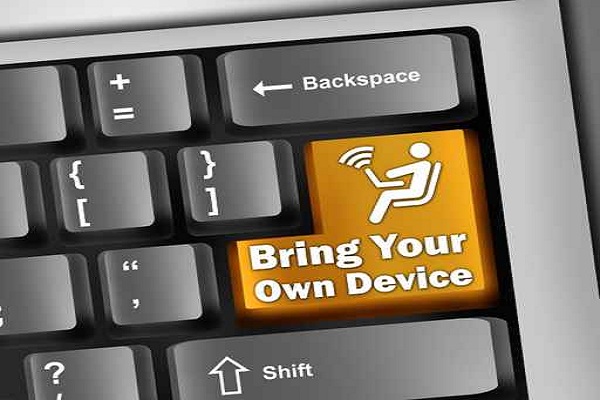BYOD: When mobile meets the meeting room
BYOD is here - but mobile devices have struggled to be used effectively to collaborate in the meeting room. So is there a solution?

It is hard to imagine a modern workplace without mobile devices and the line between business and personal devices has been blurred ever since the first mobile phones appeared on employee’s desks. Demand for Bring Your Own Device (BYOD) initiatives has grown substantially in recent years alongside the explosion in popularity of iphones, smartphones and the vast array of tablet computers.
Whether this is supported by an official enterprise policy, or is an informal practice among employees, companies can no longer ignore the fact that personal devices are being used in the workplace as a matter of course. While there have been some concerns voiced surrounding data security, those companies that have embraced the trend have been quick to recognise the benefits.
The irony is, the popularity of BYOD amongst employees is largely down to the fact that most of these personal laptops, smartphones or tablets are often more technologically advanced than the company’s own on-premise technology. Regardless of the functionality of the devices, BYOD has inherent advantages for both employees and businesses – improving opportunities for mobile and flexible working and increasing collaboration, which in turn is boosting productivity.
BYOD plays an increasingly important role in many successful businesses and the most forward-thinking companies are developing strategies to maximise the opportunities it can offer. One area where we are seeing significant growth is in the use of BYOD in the meeting room. Technological-savvy companies are starting to recognise that the connectivity options these smart devices offer can improve meeting room collaboration options. Employees are using tablets and smartphones as combined personal dairies, communications tools and notepads. Therefore businesses should look to provision the sharing of content from across these devices to improve the meeting room experience. Whether the purpose of the meeting is to brainstorm a creative idea or to present a sales pitch, mobile technologies help make sessions run more efficiently.
However, many in the corporate world will have attended meetings where participants have struggled to display material stored on their devices on a shared screen, or have wasted significant time doing so due to technical issues. Connecting devices running on different operating systems to a display typically means using various cables and connectors and often reconfiguring the computer’s settings. This can result in a less than perfect representation of the content due to distortion caused by incorrect screen settings or resolution. When multiple people want to put content on a shared screen the problem is compounded. If we combine technical problems with the challenge of keeping meeting attendees engaged, those putting BYOD strategies together would be wise to make the meeting room scenario a priority.
There is now a technology solution on the market to support BYOD by streamlining the sharing process. The emerging market segment for wireless collaboration technologies brings all the participants’ devices together, making meetings more productive. It makes screen sharing a straight forward and simple process, while removing the need for any specialist tech support.
BYOD is no longer just an emerging trend, it is here for the long term and it is transforming the way corporate IT services are supplied and used by both businesses and employees. Companies are sure to welcome the potential it brings for greater productivity and efficiencies in the workplace. The meeting room sits at the heart of that, and wireless collaboration technologies will play an increasingly important role in improving the quality of business meetings.
ChannelPro Newsletter
Stay up to date with the latest Channel industry news and analysis with our twice-weekly newsletter
Guy Coen is general manager collaboration, Barco
-
 Asus ZenScreen Fold OLED MQ17QH review
Asus ZenScreen Fold OLED MQ17QH reviewReviews A stunning foldable 17.3in OLED display – but it's too expensive to be anything more than a thrilling tech demo
By Sasha Muller
-
 How the UK MoJ achieved secure networks for prisons and offices with Palo Alto Networks
How the UK MoJ achieved secure networks for prisons and offices with Palo Alto NetworksCase study Adopting zero trust is a necessity when your own users are trying to launch cyber attacks
By Rory Bathgate